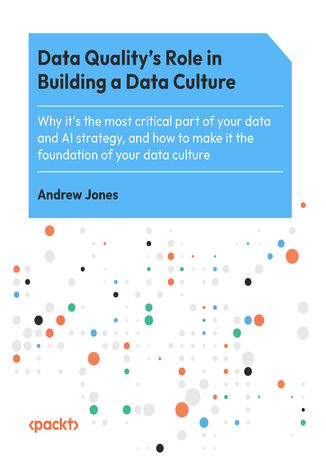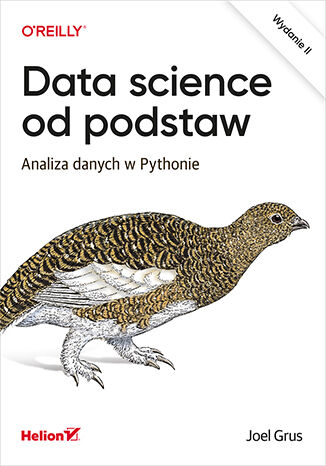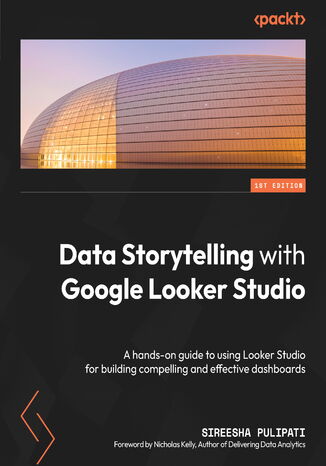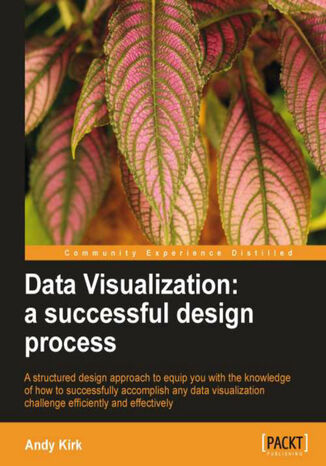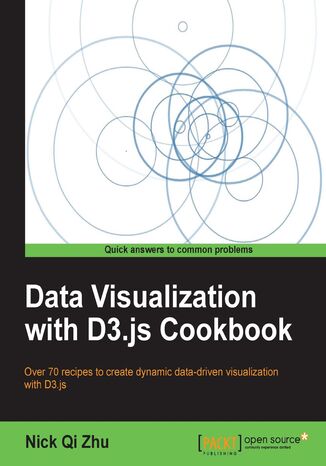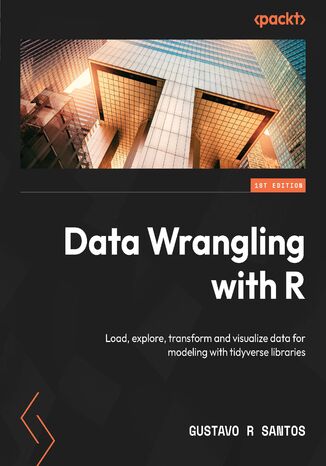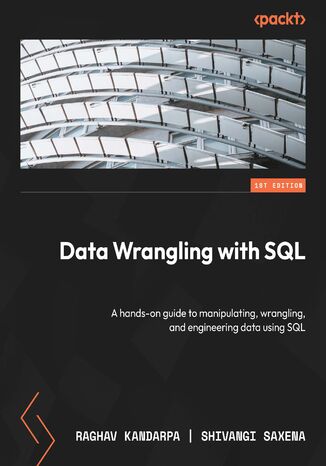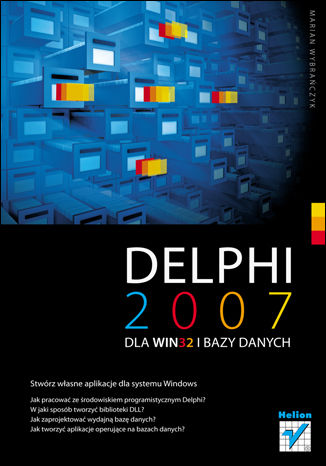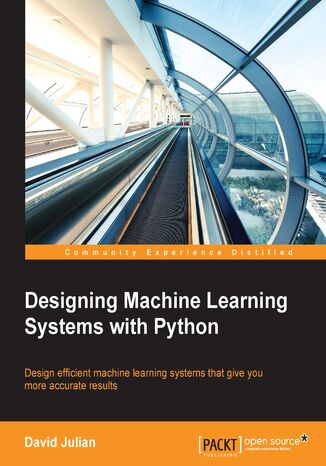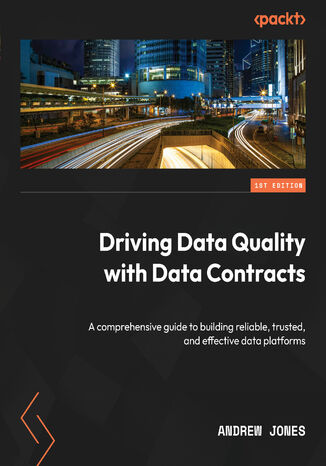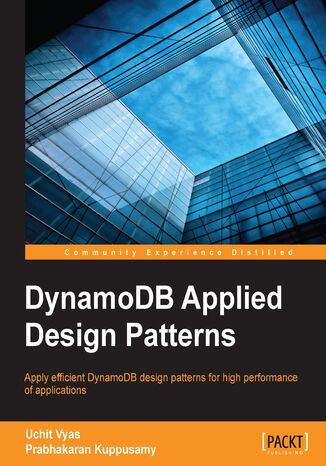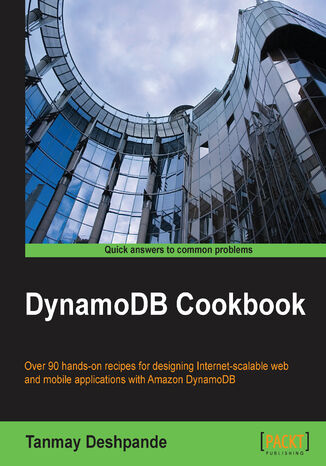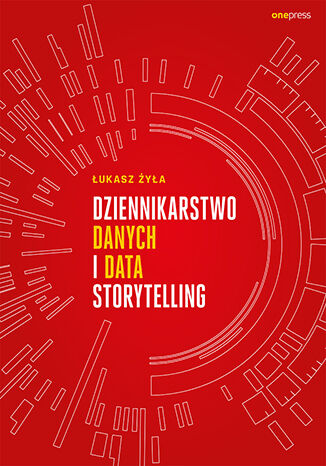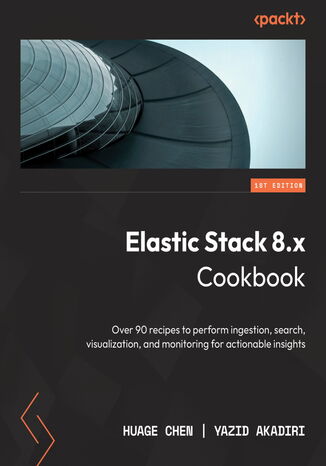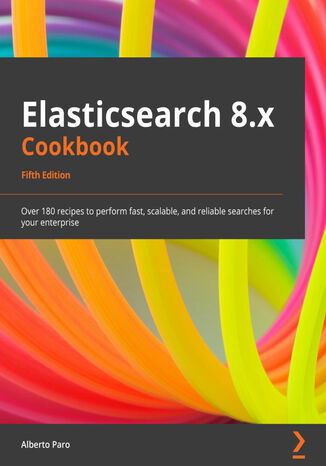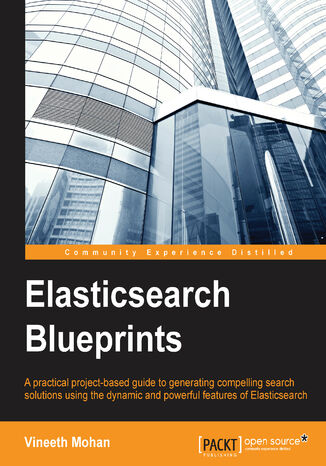Kategorien
-
- Bitcoin
- Geschäftsfrau
- Coaching
- Controlling
- E-Business
- Ökonomie
- Finanzen
- Börse und Investitionen
- Persönliche Kompetenzen
- Computer im Büro
- Kommunikation und Verhandlungen
- Kleines Unternehmen
- Marketing
- Motivation
- Multimedia-Training
- Immobilien
- Überzeugung und NLP
- Steuern
- Sozialpolitik
- Handbȕcher
- Präsentationen
- Führung
- Public Relation
- Berichte, Analysen
- Geheimnis
- Social Media
- Verkauf
- Start-up
- Ihre Karriere
- Management
- Projektmanagement
- Personal (HR)
-
- Architektura i wnętrza
- Sicherheit und Gesundheit am Arbeitsplatz
- Biznes i Ekonomia
- Haus und Garten
- E-Business
- Ekonomia i finanse
- Esoterik
- Finanzen
- Persönliche Finanzen
- Unternehmen
- Fotografie
- Informatik
- HR und Gehaltsabrechnung
- Frauen
- Computer, Excel
- Buchhaltung
- Kultur und Literatur
- Wissenschaftlich und akademisch
- Umweltschutz
- meinungsbildend
- Bildung
- Steuern
- Reisen
- Psychologie
- Religion
- Landwirtschaft
- Buch- und Pressemarkt
- Transport und Spedition
- Gesundheit und Schönheit
-
- Office-Programme
- Datenbank
- Bioinformatik
- IT Branche
- CAD/CAM
- Digital Lifestyle
- DTP
- Elektronik
- Digitale Fotografie
- Computergrafik
- Spiele
- Hacking
- Hardware
- IT w ekonomii
- Wissenschaftliche Pakete
- Schulbücher
- Computergrundlagen
- Programmierung
- Mobile-Programmierung
- Internet-Server
- Computernetzwerke
- Start-up
- Betriebssysteme
- Künstliche Inteligenz
- Technik für Kinder
- Webmaster
-
- Anthologien
- Ballade
- Biografien und Autobiografien
- Für Erwachsene
- Drama
- Tagebücher, Memoiren, Briefe
- Epos
- Essay
- Science Fiction
- Felietonys
- Fiktion
- Humor, Satire
- Andere
- Klassisch
- Krimi
- Sachbücher
- Belletristik
- Mity i legendy
- Nobelpreisträger
- Kurzgeschichten
- Gesellschaftlich
- Okultyzm i magia
- Erzählung
- Erinnerungen
- Reisen
- Gedicht
- Poesie
- Politik
- Populärwissenschaftlich
- Roman
- Historischer Roman
- Prosa
- Abenteuer
- Journalismus
- Reportage
- Romans i literatura obyczajowa
- Sensation
- Thriller, Horror
- Interviews und Erinnerungen
-
- Archäologie
- Bibliotekoznawstwo
- Filmwissenschaft
- Philologie
- Polnische Philologie
- Philosophie
- Finanse i bankowość
- Erdkunde
- Wirtschaft
- Handel. Weltwirtschaft
- Geschichte und Archäologie
- Kunst- und Architekturgeschichte
- Kulturwissenschaft
- Linguistik
- Literaturwissenschaft
- Logistik
- Mathematik
- Medizin
- Geisteswissenschaften
- Pädagogik
- Lehrmittel
- Populärwissenschaftlich
- Andere
- Psychologie
- Soziologie
- Theatrologie
- Teologie
- Theorien und Wirtschaftswissenschaften
- Transport i spedycja
- Sportunterricht
- Zarządzanie i marketing
-
- Sicherheit und Gesundheit am Arbeitsplatz
- Geschichte
- Verkehrsregeln. Führerschein
- Rechtswissenschaften
- Gesundheitswesen
- Allgemeines. Wissenskompendium
- akademische Bücher
- Andere
- Bau- und Wohnungsrecht
- Zivilrecht
- Finanzrecht
- Wirtschaftsrecht
- Wirtschafts- und Handelsrecht
- Strafrecht
- Strafrecht. Kriminelle Taten. Kriminologie
- Internationales Recht
- Internationales und ausländisches Recht
- Gesundheitsschutzgesetz
- Bildungsrecht
- Steuerrecht
- Arbeits- und Sozialversicherungsrecht
- Öffentliches, Verfassungs- und Verwaltungsrecht
- Familien- und Vormundschaftsrecht
- Agrarrecht
- Sozialrecht, Arbeitsrecht
- EU-Recht
- Industrie
- Agrar- und Umweltschutz
- Wörterbücher und Enzyklopädien
- Öffentliche Auftragsvergabe
- Management
-
- Afrika
- Alben
- Südamerika
- Mittel- und Nordamerika
- Australien, Neuseeland, Ozeanien
- Österreich
- Asien
- Balkan
- Naher Osten
- Bulgarien
- China
- Kroatien
- Tschechische Republik
- Dänemark
- Ägypten
- Estland
- Europa
- Frankreich
- Berge
- Griechenland
- Spanien
- Niederlande
- Island
- Litauen
- Lettland
- Mapy, Plany miast, Atlasy
- Miniführer
- Deutschland
- Norwegen
- Aktive Reisen
- Polen
- Portugal
- Andere
- Przewodniki po hotelach i restauracjach
- Russland
- Rumänien
- Slowakei
- Slowenien
- Schweiz
- Schweden
- Welt
- Türkei
- Ukraine
- Ungarn
- Großbritannien
- Italien
-
- Lebensphilosophien
- Kompetencje psychospołeczne
- zwischenmenschliche Kommunikation
- Mindfulness
- Allgemeines
- Überzeugung und NLP
- Akademische Psychologie
- Psychologie von Seele und Geist
- Arbeitspsychologie
- Relacje i związki
- Elternschafts- und Kinderpsychologie
- Problemlösung
- Intellektuelle Entwicklung
- Geheimnis
- Sexualität
- Verführung
- Aussehen ind Image
- Lebensphilosophien
-
- Bitcoin
- Geschäftsfrau
- Coaching
- Controlling
- E-Business
- Ökonomie
- Finanzen
- Börse und Investitionen
- Persönliche Kompetenzen
- Kommunikation und Verhandlungen
- Kleines Unternehmen
- Marketing
- Motivation
- Immobilien
- Überzeugung und NLP
- Steuern
- Sozialpolitik
- Handbȕcher
- Präsentationen
- Führung
- Public Relation
- Geheimnis
- Social Media
- Verkauf
- Start-up
- Ihre Karriere
- Management
- Projektmanagement
- Personal (HR)
-
- Anthologien
- Ballade
- Biografien und Autobiografien
- Für Erwachsene
- Drama
- Tagebücher, Memoiren, Briefe
- Epos
- Essay
- Science Fiction
- Felietonys
- Fiktion
- Humor, Satire
- Andere
- Klassisch
- Krimi
- Sachbücher
- Belletristik
- Mity i legendy
- Nobelpreisträger
- Kurzgeschichten
- Gesellschaftlich
- Okultyzm i magia
- Erzählung
- Erinnerungen
- Reisen
- Poesie
- Politik
- Populärwissenschaftlich
- Roman
- Historischer Roman
- Prosa
- Abenteuer
- Journalismus
- Reportage
- Romans i literatura obyczajowa
- Sensation
- Thriller, Horror
- Interviews und Erinnerungen
-
- Archäologie
- Philosophie
- Wirtschaft
- Handel. Weltwirtschaft
- Geschichte und Archäologie
- Kunst- und Architekturgeschichte
- Kulturwissenschaft
- Literaturwissenschaft
- Mathematik
- Medizin
- Geisteswissenschaften
- Pädagogik
- Lehrmittel
- Populärwissenschaftlich
- Andere
- Psychologie
- Soziologie
- Teologie
- Zarządzanie i marketing
-
- Lebensphilosophien
- zwischenmenschliche Kommunikation
- Mindfulness
- Allgemeines
- Überzeugung und NLP
- Akademische Psychologie
- Psychologie von Seele und Geist
- Arbeitspsychologie
- Relacje i związki
- Elternschafts- und Kinderpsychologie
- Problemlösung
- Intellektuelle Entwicklung
- Geheimnis
- Sexualität
- Verführung
- Aussehen ind Image
- Lebensphilosophien
Andere
Data Quality in the Age of AI. Building a foundation for AI strategy and data culture
As organizations worldwide seek to revamp their data strategies to leverage AI advancements and benefit from newfound capabilities, data quality emerges as the cornerstone for success. Without high-quality data, even the most advanced AI models falter. Enter Data Quality in the Age of AI, a detailed report that illuminates the crucial role of data quality in shaping effective data strategies.Packed with actionable insights, this report highlights the critical role of data quality in your overall data strategy. It equips teams and organizations with the knowledge and tools to thrive in the evolving AI landscape, serving as a roadmap for harnessing the power of data quality, enabling them to unlock their data's full potential, leading to improved performance, reduced costs, increased revenue, and informed strategic decisions.
Data science od podstaw. Analiza danych w Pythonie. Wydanie II
Analityka danych jest uważana za wyjątkowo obiecującą dziedzinę wiedzy. Rozwija się błyskawicznie i znajduje coraz to nowsze zastosowania. Profesjonaliści biegli w eksploracji danych i wydobywaniu z nich pożytecznych informacji mogą liczyć na interesującą pracę i bardzo atrakcyjne warunki zatrudnienia. Jednak aby zostać analitykiem danych, trzeba znać matematykę i statystykę, a także nauczyć się programowania. Umiejętności w zakresie uczenia maszynowego i uczenia głębokiego również są ważne. W przypadku tak specyficznej dziedziny, jaką jest nauka o danych, szczególnie istotne jest zdobycie gruntownych podstaw i dogłębne ich zrozumienie. W tym przewodniku opisano zagadnienia związane z podstawami nauki o danych. Wyjaśniono niezbędne elementy matematyki i statystyki. Przedstawiono także techniki budowy potrzebnych narzędzi i sposoby działania najistotniejszych algorytmów. Książka została skonstruowana tak, aby poszczególne implementacje były jak najbardziej przejrzyste i zrozumiałe. Zamieszczone tu przykłady napisano w Pythonie: jest to język dość łatwy do nauki, a pracę na danych ułatwia szereg przydatnych bibliotek Pythona. W drugim wydaniu znalazły się nowe tematy, takie jak uczenie głębokie, statystyka i przetwarzanie języka naturalnego, a także działania na ogromnych zbiorach danych. Zagadnienia te często pojawiają się w pracy współczesnego analityka danych. W książce między innymi: elementy algebry liniowej, statystyki i rachunku prawdopodobieństwa zbieranie, oczyszczanie i eksploracja danych algorytmy modeli analizy danych podstawy uczenia maszynowego systemy rekomendacji i przetwarzanie języka naturalnego analiza sieci społecznościowych i algorytm MapReduce Nauka o danych: bazuj na solidnych podstawach!
Sireesha Pulipati, Nicholas Kelly
Presenting data visually makes it easier for organizations and individuals to interpret and analyze information. Looker Studio is an easy-to-use, collaborative tool that enables you to transform your data into engaging visualizations. This allows you to build and share dashboards that help monitor key performance indicators, identify patterns, and generate insights to ultimately drive decisions and actions.Data Storytelling with Looker Studio begins by laying out the foundational design principles and guidelines that are essential to creating accurate, effective, and compelling data visualizations. Next, you’ll delve into features and capabilities of Looker Studio – from basic to advanced – and explore their application with examples. The subsequent chapters walk you through building dashboards with a structured three-stage process called the 3D approach using real-world examples that’ll help you understand the various design and implementation considerations. This approach involves determining the objectives and needs of the dashboard, designing its key components and layout, and developing each element of the dashboard.By the end of this book, you will have a solid understanding of the storytelling approach and be able to create data stories of your own using Looker Studio.
Data Visualization: a successful design process
Do you want to create more attractive charts? Or do you have huge data sets and need to unearth the key insights in a visual manner? Data visualization is the representation and presentation of data, using proven design techniques to bring alive the patterns, stories and key insights locked away.Data Visualization: a Successful Design Process explores the unique fusion of art and science that is data visualization; a discipline for which instinct alone is insufficient for you to succeed in enabling audiences to discover key trends, insights and discoveries from your data. This book will equip you with the key techniques required to overcome contemporary data visualization challenges. You'll discover a proven design methodology that helps you develop invaluable knowledge and practical capabilities.You'll never again settle for a default Excel chart or resort to fancy-looking graphs. You will be able to work from the starting point of acquiring, preparing and familiarizing with your data, right through to concept design. Choose your killer visual representation to engage and inform your audience.Data Visualization: a Successful Design Process will inspire you to relish any visualization project with greater confidence and bullish know-how; turning challenges into exciting design opportunities.
D3.js is a JavaScript library designed to display digital data in dynamic graphical form. It helps you bring data to life using HTML, SVG, and CSS. D3 allows great control over the final visual result, and it is the hottest and most powerful web-based data visualization technology on the market today.Data Visualization with D3.js Cookbook is packed with practical recipes to help you learn every aspect of data visualization with D3.Data Visualization with D3.js Cookbook is designed to provide you with all the guidance you need to get to grips with data visualization with D3. With this book, you will create breathtaking data visualization with professional efficiency and precision with the help of practical recipes, illustrations, and code samples.Data Visualization with D3.js Cookbook starts off by touching upon data visualization and D3 basics before gradually taking you through a number of practical recipes covering a wide range of topics you need to know about D3.You will learn the fundamental concepts of data visualization, functional JavaScript, and D3 fundamentals including element selection, data binding, animation, and SVG generation. You will also learn how to leverage more advanced techniques such as custom interpolators, custom tweening, timers, the layout manager, force manipulation, and so on. This book also provides a number of pre-built chart recipes with ready-to-go sample code to help you bootstrap quickly.
In this information era, where large volumes of data are being generated every day, companies want to get a better grip on it to perform more efficiently than before. This is where skillful data analysts and data scientists come into play, wrangling and exploring data to generate valuable business insights. In order to do that, you’ll need plenty of tools that enable you to extract the most useful knowledge from data.Data Wrangling with R will help you to gain a deep understanding of ways to wrangle and prepare datasets for exploration, analysis, and modeling. This data book enables you to get your data ready for more optimized analyses, develop your first data model, and perform effective data visualization.The book begins by teaching you how to load and explore datasets. Then, you’ll get to grips with the modern concepts and tools of data wrangling. As data wrangling and visualization are intrinsically connected, you’ll go over best practices to plot data and extract insights from it. The chapters are designed in a way to help you learn all about modeling, as you will go through the construction of a data science project from end to end, and become familiar with the built-in RStudio, including an application built with Shiny dashboards.By the end of this book, you’ll have learned how to create your first data model and build an application with Shiny in R.
Data Wrangling with SQL. A hands-on guide to manipulating, wrangling, and engineering data using SQL
Raghav Kandarpa, Shivangi Saxena
The amount of data generated continues to grow rapidly, making it increasingly important for businesses to be able to wrangle this data and understand it quickly and efficiently. Although data wrangling can be challenging, with the right tools and techniques you can efficiently handle enormous amounts of unstructured data.The book starts by introducing you to the basics of SQL, focusing on the core principles and techniques of data wrangling. You’ll then explore advanced SQL concepts like aggregate functions, window functions, CTEs, and subqueries that are very popular in the business world. The next set of chapters will walk you through different functions within SQL query that cause delays in data transformation and help you figure out the difference between a good query and bad one. You’ll also learn how data wrangling and data science go hand in hand. The book is filled with datasets and practical examples to help you understand the concepts thoroughly, along with best practices to guide you at every stage of data wrangling.By the end of this book, you’ll be equipped with essential techniques and best practices for data wrangling, and will predominantly learn how to use clean and standardized data models to make informed decisions, helping businesses avoid costly mistakes.
Delphi 2007 dla WIN32 i bazy danych
Stwórz własne aplikacje dla systemu Windows Jak pracować ze środowiskiem programistycznym Delphi? W jaki sposób tworzyć biblioteki DLL? Jak zaprojektować wydajną bazę danych? Jak tworzyć aplikacje operujące na bazach danych? Wśród wszystkich środowisk programistycznych umożliwiających tworzenie aplikacji Delphi jest jednym z najbardziej znanych i popularnych. To narzędzie, obecne na rynku od ponad dwunastu lat, cieszy się zasłużonym uznaniem twórców oprogramowania -- dzięki sporym możliwościom, ogromnej bibliotece komponentów i czytelnej składni języka Object Pascal, będącego podstawą tego środowiska. Najnowsza wersja Delphi, oznaczona symbolem RAD Studio 2007, nie tylko umożliwia tworzenie "klasycznych" aplikacji dla Windows, opartych o Windows API, ale także udostępnia kontrolki platformy .NET. Książka "Delphi 2007 dla WIN32 i bazy danych" to podręcznik opisujący zasady tworzenia aplikacji dla systemu Windows w najnowszej wersji Delphi. Przedstawia ona techniki tworzenia aplikacji bazodanowych w oparciu o mechanizmy Windows API i kontrolki VCL. Czytając ją, poznasz komponenty, jakie Delphi oferuje programiście, i dowiesz się, jak korzystać z nich we własnych aplikacjach. Opanujesz mechanizmy komunikacji z niemal wszystkimi systemami zarządzania bazami danych dostępnymi na rynku. Przeczytasz także o tworzeniu wersji instalacyjnych napisanych przez siebie aplikacji. Interfejs użytkownika Delphi 2007 Komponenty dostępne w Delphi Przetwarzanie grafiki Korzystanie z komponentów VCL Aplikacje wielowątkowe Tworzenie bibliotek DLL Operacje na plikach Obsługa dokumentów XML Projektowanie bazy danych i struktury tabel Komunikacja z bazami danych Mechanizmy blokowania rekordów Tworzenie wersji instalacyjnych aplikacji Wykorzystaj możliwości najnowszej wersji środowiska programistycznego, które zrewolucjonizowało proces tworzenia aplikacji!
Designing Machine Learning Systems with Python. Key design strategies to create intelligent systems
Machine learning is one of the fastest growing trends in modern computing. It has applications in a wide range of fields, including economics, the natural sciences, web development, and business modeling. In order to harness the power of these systems, it is essential that the practitioner develops a solid understanding of the underlying design principles.There are many reasons why machine learning models may not give accurate results. By looking at these systems from a design perspective, we gain a deeper understanding of the underlying algorithms and the optimisational methods that are available. This book will give you a solid foundation in the machine learning design process, and enable you to build customised machine learning models to solve unique problems. You may already know about, or have worked with, some of theoff-the-shelf machine learning models for solving common problems such as spam detection or movie classification, but to begin solving more complex problems, it is important to adapt these models to your own specific needs. This book will give you this understanding and more.
Despite the passage of time and the evolution of technology and architecture, the challenges we face in building data platforms persist. Our data often remains unreliable, lacks trust, and fails to deliver the promised value.With Driving Data Quality with Data Contracts, you’ll discover the potential of data contracts to transform how you build your data platforms, finally overcoming these enduring problems. You’ll learn how establishing contracts as the interface allows you to explicitly assign responsibility and accountability of the data to those who know it best—the data generators—and give them the autonomy to generate and manage data as required. The book will show you how data contracts ensure that consumers get quality data with clearly defined expectations, enabling them to build on that data with confidence to deliver valuable analytics, performant ML models, and trusted data-driven products.By the end of this book, you’ll have gained a comprehensive understanding of how data contracts can revolutionize your organization’s data culture and provide a competitive advantage by unlocking the real value within your data.
Dziennikarstwo danych i data storytelling
Bez danych jesteś jedynie kolejną osobą z opinią... Dziennikarstwo danych przeżywa dziś prawdziwy rozkwit. Dzieje się tak dlatego, że nasze życie w dużej mierze przeniosło się do internetu, a internet to... dane. Megabajty, gigabajty, terabajty danych. Misją współczesnego dziennikarza jest przedstawiać je społeczeństwu rzetelnie, a równocześnie pięknie, czyli w sposób zrozumiały, łatwy do przyswojenia. Nim się jednak owe dane pięknie zestawi, trzeba je znaleźć. Gdzie szukać? Jak je zdobyć? W jaki sposób opowiedzieć dane? Na takie pytania autor odpowiada w tej książce. Nie przeczytasz w niej o "ładnych wykresach", bo wbrew pozorom to nie one są esencją dziennikarstwa danych i data storytellingu. Dowiesz się natomiast, gdzie biją źródła potrzebnych Ci informacji, jak je przetwarzać i analizować. Znajdziesz tu także wskazówki, w jaki sposób tworzyć dobre wizualizacje za pomocą prostych aplikacji dostępnych za darmo w internecie i jak kreować angażujące odbiorców data stories. Na koniec wejdziesz na wyższy poziom - nauczysz się prezentować dane z wykorzystaniem kodu programistycznego. Kto? Co? Jak? Gdzie? Kiedy? ― odpowiedzi na te podstawowe pytania musi znaleźć każdy dziennikarz, który chce rzetelnie wykonać swoją pracę. Jednocześnie przy zalewie informacji, danych ze źródeł, których weryfikacja jest równie czasochłonna, każdy wykonujący ten piękny zawód coraz bardziej przypomina mitycznego Syzyfa. Przebicie się przez gigabajty informacji, przetworzenie ich i stworzenie materiału, który tłumaczy odbiorcy rzeczywistość, jest dziś działaniem obarczonym ogromnym wysiłkiem i jeszcze większym ryzykiem. Kaskadowy spadek zaufania do instytucji publicznych i prywatnych, z jakim mamy do czynienia od lat, oddziałuje także na media, z jednej strony wystawiane na szereg nacisków biznesowych, politycznych i społecznych, z drugiej ― borykające się z ciągłymi problemami finansowymi. Co warto wiedzieć, dobre dziennikarstwo, jakościowe dziennikarstwo to coś, co wymaga swobodnego poruszania się autorów w przestrzeni internetu i danych, a także poznania podstaw funkcjonowania w tej przestrzeni. Dlatego, jeżeli chcemy mieć przynajmniej cień nadziei na dobrze wykonaną pracę, warto sięgnąć po książkę Łukasza Żyły. W zawodzie zawsze mi powtarzano, że tej profesji człowiek uczy się tylko w praktyce i na pewno nie na studiach. Nadal tak jest, choć czasy, w których media dosłownie pączkują na każdym kroku i angażują coraz młodszych adeptów dziennikarstwa, wymagają, by sięgnąć po informacyjną pigułę, swoisty wykrywacz min, dzięki czemu te pierwsze kroki wspomniany początkujący dziennikarz będzie mógł stawiać względnie bezpiecznie. Dziennikarstwo danych i data storytelling to także pozycja dla osób doświadczonych w tym zawodzie. Powód jest oczywisty, technologia zmieniła dziennikarstwo i w pędzie żywiołu, którym ono jest, łatwo popaść w bezpieczną i przez to złudną rutynę, a wtedy jesteśmy o krok od poważnego błędu. Dzięki książce Łukasza Żyły łatwiejsze do ominięcia będą cyfrowe rafy, którymi sieć jest usłana. Bartosz Kurek, były dziennikarz Polsatu, obecnie menedżer ds. public affairs w Philip Morris Co wy tam tak naprawdę robicie? ― to częste pytanie, kiedy mówię, że pracuję w dziale danych „Wyborczej”. Niektórzy ze znawstwem odpowiadają: „Aaa, czyli robicie analizy wyników sprzedaży gazety?”. Inni zmieniają temat, spodziewając się, że zarzucę ich nudnymi opowieściami o uzupełnianiu tabelek liczbami. Co ciekawe, pytanie o to, jak dokładnie wygląda nasza praca, zadają również dziennikarze. Teraz, zamiast wchodzić w szczegóły, będę mógł zacząć odpowiedź od słów: „Jest taka książka, warto przeczytać…”, bo Łukasz w bardzo przystępny sposób tłumaczy, czym to się je. I myślę, że niezależnie od tego, jaką działką dziennikarstwa się zajmujecie, znajdziecie w niej coś dla siebie. Części dotyczące współpracy z urzędnikami, dostępu do informacji czy opowiadania historii powinien przyswoić każdy, kto będzie pracował w zawodzie. Po te o opracowywaniu danych sięgną ambitniejsi, a może po prostu bardziej przewidujący, bo pisać potrafi wielu, ale zdolność pisania połączona z umiejętnością analizowania, programowania lub wizualizowania robi z dziennikarza człowieka do zadań specjalnych. Kiedy czytałem tę książkę, wiele razy żałowałem, że czegoś takiego nie było, kiedy ja zaczynałem przygodę z danymi. Dzięki niej widzę, ile jeszcze powinienem się w tej dziedzinie nauczyć. Dominik Uhlig, szef BIQdata.pl ― działu danych „Gazety Wyborczej”
Huage Chen, Yazid Akadiri, Shay Banon
Learn how to make the most of the Elastic Stack (ELK Stack) products—including Elasticsearch, Kibana, Elastic Agent, and Logstash—to take data reliably and securely from any source, in any format, and then search, analyze, and visualize it in real-time. This cookbook takes a practical approach to unlocking the full potential of Elastic Stack through detailed recipes step by step.Starting with installing and ingesting data using Elastic Agent and Beats, this book guides you through data transformation and enrichment with various Elastic components and explores the latest advancements in search applications, including semantic search and Generative AI. You'll then visualize and explore your data and create dashboards using Kibana. As you progress, you'll advance your skills with machine learning for data science, get to grips with natural language processing, and discover the power of vector search. The book covers Elastic Observability use cases for log, infrastructure, and synthetics monitoring, along with essential strategies for securing the Elastic Stack. Finally, you'll gain expertise in Elastic Stack operations to effectively monitor and manage your system.
Elasticsearch is a Lucene-based distributed search engine at the heart of the Elastic Stack that allows you to index and search unstructured content with petabytes of data. With this updated fifth edition, you'll cover comprehensive recipes relating to what's new in Elasticsearch 8.x and see how to create and run complex queries and analytics.The recipes will guide you through performing index mapping, aggregation, working with queries, and scripting using Elasticsearch. You'll focus on numerous solutions and quick techniques for performing both common and uncommon tasks such as deploying Elasticsearch nodes, using the ingest module, working with X-Pack, and creating different visualizations. As you advance, you'll learn how to manage various clusters, restore data, and install Kibana to monitor a cluster and extend it using a variety of plugins. Furthermore, you'll understand how to integrate your Java, Scala, Python, and big data applications such as Apache Spark and Pig with Elasticsearch and create efficient data applications powered by enhanced functionalities and custom plugins.By the end of this Elasticsearch cookbook, you'll have gained in-depth knowledge of implementing the Elasticsearch architecture and be able to manage, search, and store data efficiently and effectively using Elasticsearch.

